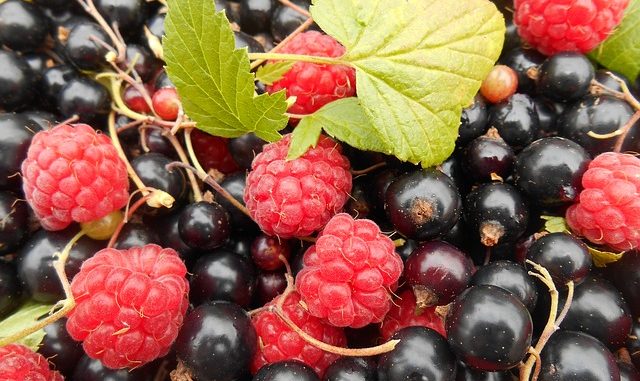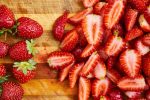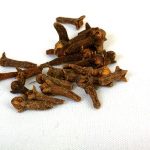
Anthocyanins are natural pigments belonging to the flavonoid family and are responsible for a wide range of red and purple colours in fruits, vegetables and flowers.
Anthocyanins are one of the largest groups of water-soluble pigments known and are very widespread throughout the plant kingdom (Ghosh & Konishi, 2007). They are part of the larger group of flavonoids of which there are 8000 flavonoids known and 500 having an anthocyanin structure. The number is still growing (Pietta, 2000; Soto-Hernandez et al., 2017). They are mostly found in flowers and fruit but grains and other plant structures such as roots also contain them.
They are used as natural food colourings providing red, blue and purple hues but not so much yellow or orange. Their rise in this application has been driven by the general move away from synthetic colours and there has been a considerable increase in patented applications. Due to the urgent need for natural and healthy pigments in the food industry, the exploration of anthocyanins from edible plants is receiving increasing attention (Araceli et al., 2009).
The interest in anthocyanins has grown because they also have potent health benefits. There is plenty of clinical evidence supporting their inclusion in the diet for reducing the risk of coronary heart disease and various cancers. In most cases properties are linked to their antioxidant behaviour (Diaconeasa et al., 2015).
History
The word anthocyanin comes from the Ancient Greek for flower (anthos) and blue (kyanose) and was originally used to describe the blue pigment obtained from cornflower Centaurea cyanus. The early colour chemistry was conducted by Willstatter and then Robinson.
Chemical Structure
They are polyhydroxy or polymethoxy derivatives of 2-phenyl-benzopyrylium. Many are present in plants attached to sugars as mono, di or triglycosides by α- or β-linkages (Marta et al., 2009).
There are more than 500 anthocyanins in nature, and the most common anthocyanins in plants are cyanidin (Cn), pelargonidin (Pg), peonidin (Pn), delphinidin (Dp), petunidin (Pt) and malvidin (Mv), which have a 3-glycoside structure (Ali et al., 2016).
There are four species of anthocyanin. The quinoidal base is blue, the flavylium cation is red, the pseudobase or carbitol is colourless, and the chalcone is also colourless. Each structure has a characteristic absorption spectrum.
These four species exist in equilibrium, and the colour of the anthocyanin compound depends on the ratio of these species in solution.
Isolation Of Anthocyanins
Anthocyanins are highly soluble and so water extraction is most effective. Anthocyanins contained in skins, pericarp (rind) and other hard structures require maceration using an acidic buffer or solution such as 1% hydrochloric acid in methanol. The residue is filtered and dried.
Most anthocyanins are isolated using various forms of chromatography.
Large-scale countercurrent chromatography as been applied to the recovery of anthocyanins from various sources including Tradescantia pallida leaves, purple corn, elderberry juice, red wine and blackberries. Pure anthocyanins are obtained up to several hundred milligrams in a single run (Schwarz et al., 2003).
Conventional solvent extraction is now thought to be too time consuming and wasteful although it is used more effectively at larger scales. Ultrasound extraction is feasible and has been tested on raspberries and blackcurrants (Sansome-Smith, 2012).
Purity and identity of anthocyanins is determined using HPLC, HPLC-electrospray ionization multiple mass spectrometry and nuclear magnetic resonance spectroscopy.
Anthocyanins are analysed using a spectrophotometric technique The method of Fuleki & Francis (1968) is effective.
Solubility
All anthocyanins are highly soluble. This is due to the presence of hydroxyl groups which are able to hydrogen bond with water. The degree of solubility is largely dependent on the total number. Malvidin is one of the most soluble because it has such a high number of hydroxyl groups.
Effect Of pH On Anthocyanin Structure
The degree of acidity and alkalinity in aqueous media affects the type of chemical structure adopted. The pH also affects the stability of the anthocyanin too. Anthocyanins have been used in the past as natural pH indicators.
It is widely accepted that there is an equilibrium between the flavylium (2-phenylbenzopyrylium) cation AH+ and the carbinol B in acidic media.
AH+ + H20 ⇔ B + H+
In acid solutions the pigments are red. Sondheimer determined the equilibrium constant using pelargonidin 3-monoglucoside where a hydroxyl is present at position 5.
The intensity of the colour decreases with the rise in pH. Freshly made neutral or alkali anthocyanin solutions are violet or blue, but their colour fades slowly. An increase in the amount of the pseudobase or the chalcone species gives rise to colourless solutions (Torskangerpoll and Andersen, 2005).
Stability Of Anthocyanins
Much of the chemistry including transformation and stability work was conducted in the 80s. It’s worth consulting papers by Broulliard & Dubois, (1977). Stability depends on the type of anthocyanin pigment, presence of copigments, temperature, pH, light, metal ions, enzymes, antioxidants and oxygen.
Acylation improves stability generally (Francis, 1989) and this has been demonstrated in model beverages. For example, acylated anthocyanins from red sweet potatoes are more stabile in acid pH beverages than deacylated forms (Bassa and Francis, 1987).
All anthocyanins are subject to degradation and loss in food stuffs due to a host of oxidative reactions. These are generally enzymatic and non-enzymatic based forms of browning which are often lumped together under the headline banner of Maillard browning. One of the major issues in maintaining the quality of foods and beverages through a prolonged shelf-life is to keep the colour as vibrant as possible.
Enzymatic browning involves catalysis by peroxidases and polyphenol oxidases.
Chemical compounds are often added to beverages to help retain as much colour as possible through shelf-life. As well as dropping the pH to make it more acidic for example, beverage developers often add small amounts of sulphur dioxide to inhibit the enzymatic activity of enzymes such as the polyphenol oxidases.
In the early 60s a number of studies showed that polyphenol oxidase was inhibited by sulphur dioxde or its derivatives based on bisulphites (Ponting, 1960; Diemair et al., 1960). The colour of.
Temperature
Temperature degrades the colour of anthocyanins by favouring formation of the chalcone species. Structural features can reverse this change in equilibrium, but usually heating results in the colour of anthocyanins fading, or going colourless, due to the change in equilibrium towards chalcone formation, at the expense of the other three species (Brouillard, 1982).
Temperature degradation usually follows a first-order reaction. Long-term storage at ambient temperatures will always lead to fading and numerous attempts to reduce light damage and maintain chill storage have been successful.
The half-life for chill storage of anthocyanin extracts from mangosteen for example is higher than blackberry concentrate juice (Wang & Xu, 2007) although blackberry extracts are not routinely used to colour drinks.
Medicinal And Pharmacological Benefits Of Anthocyanins
Anthocyanins and phenolic acids generally have been investigated for their health benefits. They are found to have multiple biological and physiological effects, including hypoglycemic, hypotensive, and diuretic effects. They also have neuroprotective, cardiovascular protective, and anticancer properties. In some instances the value in fruits (Ghosh & Konishi, 2007) is largely down to the presence of these particular pigments and vast amounts of research is being devoted to their properties.
Particular fruits and anthocyanin rich vegetables, grains etc. have been examined for their anthocyanin benefits. Choose from:
- Black rice pigments (Xia et al., 2003; Hui et al., 2010)
- mulberry (Kang et al., 2006; Song et al., 2009)
The list is almost infinite in length nowadays!
References
Ali, H.M., Almagribi, W., Alrashidi, M.N. (2016) Antiradical and reductant activities of anthocyanidins and anthocyanins, structure-activity relationship and synthesis. Food Chemistry. 194 pp. 1275–1282. doi: 10.1016/j.foodchem.2015.09.003.
Araceli C, Madelourdes PH, Maelena P, Joséa R, Carlosandrés G. Chemical studies of anthocyanins: A review. Food Chemistry. 113 pp. 859–871. doi: 10.1016/j.foodchem.2008.09.001
Bassa, I.A. and Francis, F.J. (1987). Stability of anthocyanins from sweet potatoes in a model beverage. J. Food Sci. 52: pp. 1753
Brouillard, R. (1982) Chemical structure of anthocyanins. In: P. Markakis, Editor, Anthocyanins as food colours. Food science and technology, Academic Press, London (1982), pp. 1–40
, . (2007). Anthocyanins and anthocyanin‐rich extracts: role in diabetes and eye function. Asia Pac. J. Clin. Nutr. 16: pp. 200–8
, , , , , , . (2010). Anticancer activities of an anthocyanin‐rich extract from black rice against breast cancer cells in vitro and in vivo. Nutr. Cancer 62 pp. 1128–36 (Article).
, , , , . (2006). Neuroprotective effects of the cyanidin‐3‐O‐beta‐d‐glucopyranoside isolated from mulberry fruit against cerebral ischemia. Neurosci. Lett. 391 pp. 122–6.
Marta, Á., et al. (2009) Bioconversion of anthocyanin glycosides by Bifidobacteria and Lactobacillus. Food Research International. 42 pp. 1453–1461. doi: 10.1016/j.foodres.2009.07.026
Pietta, P.G. (2000) Flavonoids as antioxidants. J. Nat. Product 63: pp. 1035-1042
, , , , , , , . 2009. Anthocyanin supplementation improves serum LDL‐ and HDL‐cholesterol concentrations associated with the inhibition of cholesteryl ester transfer protein in dyslipidemic subjects. Am J Clin Nutr 90: pp. 485–92 (Article).
Sansome-Smith, A.W. (2012) Private Communication. FoodWrite Ltd Project. Extraction Of Anthocyanins From Fruit For Food Colouring Purposes. (Confidential report).
Schwarz, M., Hillebrand, S., Habben, S., Degenhardt, A., & Winterhalter, P. (2003). Application of high-speed countercurrent chromatography to the large-scale isolation of anthocyanins. Biochemical Engineering Journal, 14(3), pp. 179–189
, , , , , . (2009). Phytochemical profiles of different mulberry (Morus sp.) species from China. J Agric Food Chem 57:pp. 9133–40 (Article)
Soto-Hernández, M., Tenango, M. P., & García-Mateos, R. (Eds.). (2017). Phenolic Compounds: Natural Sources, Importance and Applications. BoD–Books on Demand.
Torskangerpoll, K. and Andersen, O. (2005) Colour stability of anthocyanins in aqueous solutions at various pH values. Food Chemistry, 89 (3), pp. 427-440
, , , , . (2003). Supplementation of diets with the black rice pigment fraction attenuates atherosclerotic plaque formation in apolipoprotein E deficient mice. J. Nutr. 133 pp. 744–51.



Leave a Reply